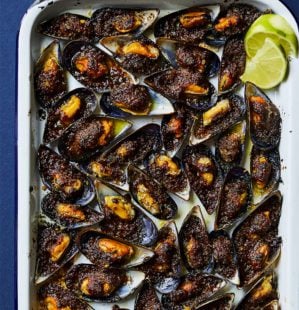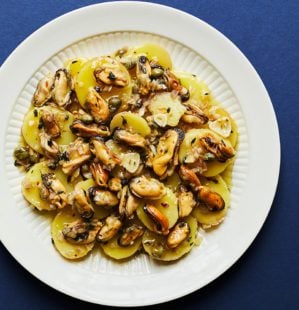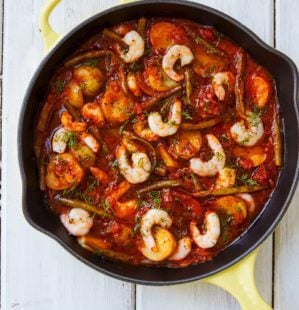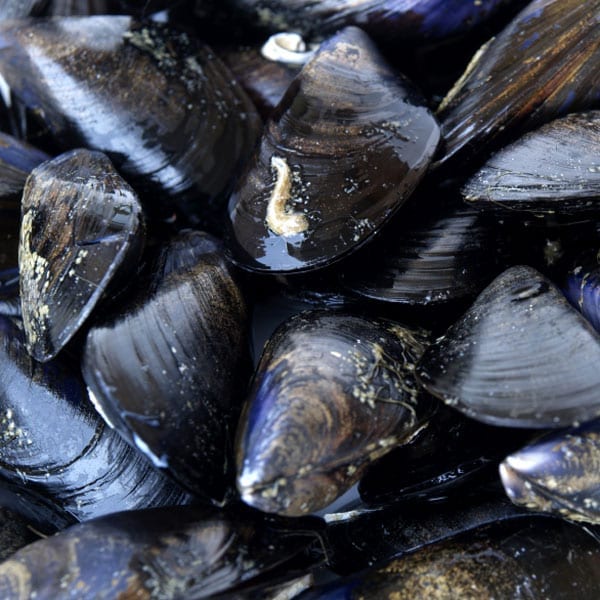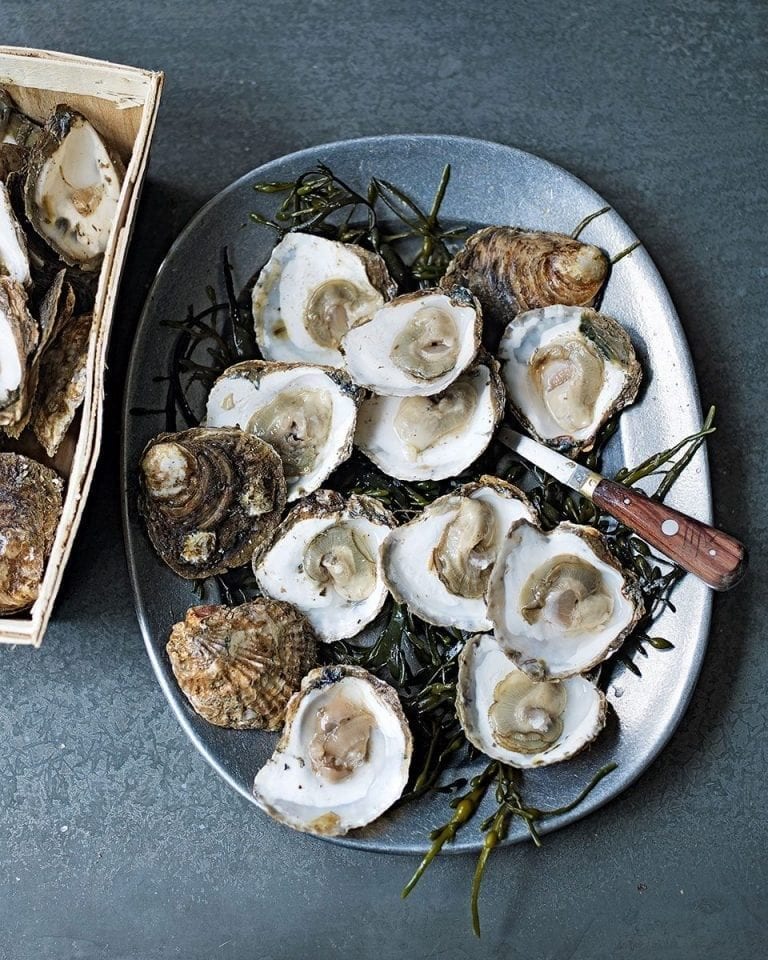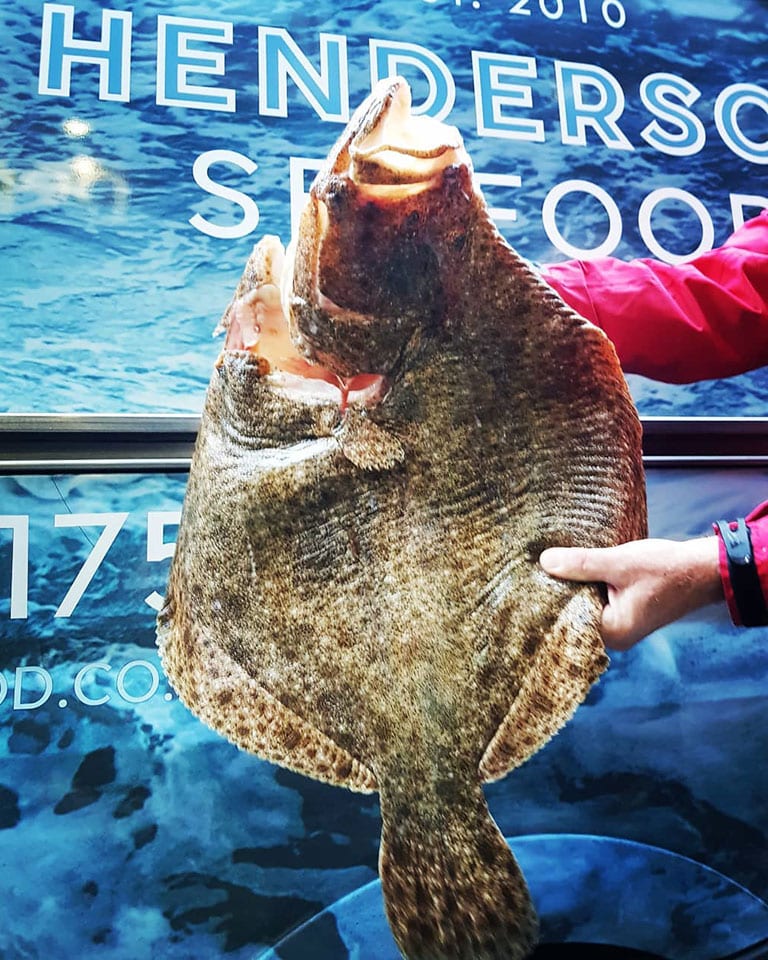Mussels: the least selfish shellfish
Healthy, affordable and a positive addition to their environment: rope-grown mussels could be our sustainable culinary saviour, and we should all be making the most of them. Let’s investigate why you should choose mussels over prawns…
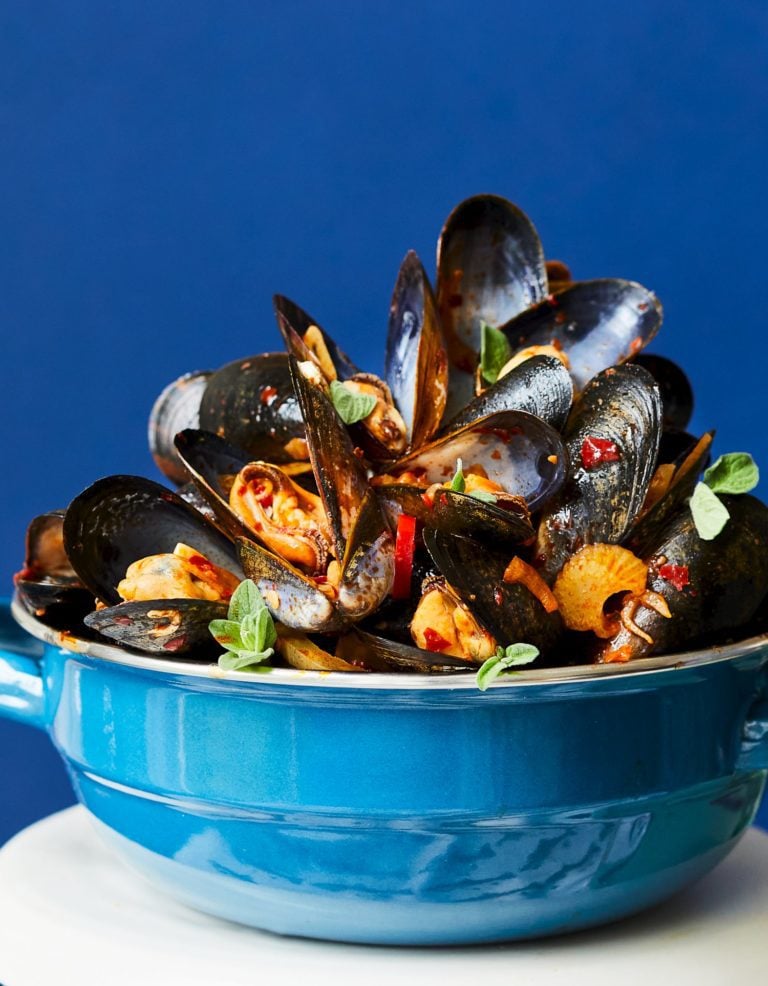
What are mussels and why do we eat them?
The blue-black shelled filter feeders that we now see most often next to a bowl of chips have lived in both fresh and saltwater habitats for hundreds of millions of years in their early forms. They’re one of the family of bivalves – just like oysters, scallops and clams – meaning that their bodies are enclosed and compressed by a hinged shell formed of two parts.
Archaeologists are all but certain that mussels were part of the prehistoric diet thanks to the vast quantities of mussel shells found on sites the world over. The ancient Gauls enjoyed them and even cultivated them, the Romans followed suit – there are two cooking methods for mussels in Apicius’ cookbook from 900 AD. In Britain we were even getting rather gourmet with our serves. Dorothy Hartley’s ‘Food in England’ (1954) includes a recipe for “Muscules in Broth” – laced with powdered ginger and saffron, no less – that’s thought to date from 1400. Between then and the late 20th century they fell out of favour and became a food of the poor, possibly because they were sometimes harvested from very unappetizing waters and therefore caused some even more unappetizing illnesses (although bivalves are very unlikely to make you ill when properly cooked).
Nowadays we are delighted to eat bowlfuls of mussels in Belgium and to shell out for them in seafood restaurants, but don’t often think to steam a pot for ourselves, despite the fact that they’re low in fat, rich in B12 vitamins and Omega-3s and contain eight times more iron than chicken.
Mussels are a low-fat source of animal protein that are high in B12s and iron.
What makes them such a sustainable catch?
Bivalves are all incredibly low maintenance; they don’t need any pesticides or fertilizer, they seed themselves, they filter morsels of food from the water they live in. All mussels ask for is a thing to cling to, and a rope is ideal. This is convenient for mussel farmers, too, as it means they can easily be lifted out of the water when they’re ready to harvest, meaning no other species is harmed in the making of your bowlful. “There aren’t many sources of animal protein you can eat with as clean a conscience” says Jack Clarke, Sustainable Seafood Advocate at the Marine Conservation Society.
But it is important to look for rope-grown, farmed mussels, as ‘wild’ mussels are often harvested in ways that really disrupt their habitat. “It is quite high impact. The fishermen scoop them up using dredges, which are big metal grates that scour the seabed.” Frustratingly there are some suppliers certified by the Marine Stewardship Council (MSC) that sell wild mussels rather than farmed, so it’s important to look for ‘rope-grown’ before you look for the MSC blue tick on packaging.
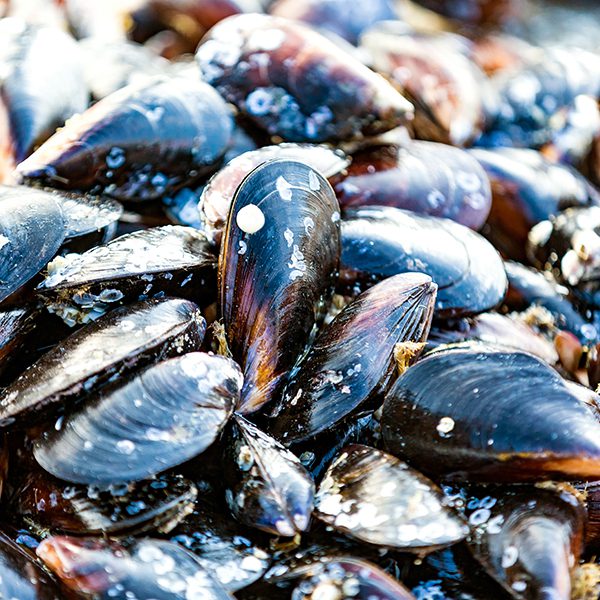
There’s also an argument for choosing to eat bivalves over other animals as they’re not sentient. Though they do react to a stimulus with a nervous response, they aren’t aware of their senses. “I do know a vegan who eats bivalves,” says Jack, “but he’s a vegan because of planetary concerns. Bivalves have a lower planetary impact than some vegetable crops. It comes down to your own personal values.”
Look for farmed, rope-grown British mussels as the most sustainable choice.
What would more mussels mean for our seas?
The revolutionary, family-run business Offshore Shellfish is the UK’s first large-scale fully offshore rope-cultured mussel farm. They put their first ropes in off the coast of south Devon ten years ago and are aiming for annual harvests of 10,000 tonnes. They’ve been working with marine ecologists at Plymouth University to monitor any changes caused by the mussels’ presence. “We actually started the work on looking at the seabed before we put any ropes into the water so that we could see the full effects of the mussel farm on the area and have this fully documented,” explains Sarah Holmyard, Head of Sales and Marketing and daughter of Offshore Shellfish’s founders. “The net benefit to the area and surrounding ecosystems and species has been incredible.” The ropes create a habitat that’s essentially an underwater playground in which a huge range of sea life can thrive: everything from velvet crabs to blue fin tuna.
In addition to making their surroundings more pleasant en masse, each individual mussel can filter up to 25 litres of seawater per day. There’s even a rumour that they’re carbon positive: the shells of bivalves are made from crystallizations of calcium carbonate so they’re locking carbon atoms away as they grow. “The chemical reaction involved means that they can’t technically call it sequestration,” Jack Clarke clarifies, as well as pointing out that you’d need to dispose of the shells in a very particular way afterwards, too, “so not carbon positive, but pretty good.”
There are mussels grown sustainably elsewhere, of course – beautiful blue-lipped mussels from New Zealand often appear on high end restaurant menus, Chilean mussels have a ‘best choice’ sustainability rating with the Marine Conservation Society – but for obvious reasons British mussels should be your first choice. “I would advise minimising the food miles.” says Clarke, “There are lots of British mariculturists growing various bivalves who need your support.”
Mussel farms are of benefit to the waters and ecosystems they sit within.
How can I really flex my mussels?
It’s true that there’s a little prep involved in cooking mussels, but their speedy cooking time more than makes up for that, and they’re an exceptionally versatile vehicle for big flavours. Chef Jack Sharland from the River Exe Café (which serves mussels grown just six miles along the Devon coast) is particularly proud of their Thai red curry mussels; “There’s a light spice in the coconut broth and they’re finished with a sweet pineapple salsa and caramelised coconut. The balance for me is perfect.” Despite growing up locally he only started eating mussels when he became a chef, but is a complete convert. “I would encourage anyone to give them a try.”
At sustainable seafood restaurant Angela’s in Margate, Kent, chef Rob Cooper explores beyond the classic steamed-with-booze variety (although they are experts in that method, too). “We make mussel and leek pasties with stout pastry which works well, curried mussel sauce is a winner with our local skate or turbot and I also love them served in the half shell and dressed with a vinaigrette as a snack.” They’re also a Cooper family favourite. “My girls [aged 11 and 7] love them. They take about two minutes to cook, are still relatively cheap to buy and are packed with flavour. Everything’s a win.”
They’re affordable, versatile and cook in just a few minutes.
What is a bivalve?
A bivalve is the term for shellfish composed of two movable valves. As well as mussels, British bivalves that are commonly eaten include:
Oysters
As with mussels, oysters are very sustainable when farmed, but wild oysters should be avoided as they’re generally dredged. Pacific oysters (or rock oysters) are almost always farmed in Britain, whereas native oysters are more likely to be wild-caught.
Cockles
Although largely a sustainable choice, it’s best to only buy cockles from MSC approved suppliers as some are harvested using hand rakes, which can impact the habitats, and in some areas they’re overfished. They’re excellent in a British equivalent of spaghetti alla vongole, or in a chowder-type soup.
Scallops
Farmed scallops are a sustainable choice, but anything wild-caught needs investigating, as even when they’re hand-dived it’s possible that the stock levels aren’t well monitored.
Razor clams
Traditionally razor clams are hand-gathered, and this doesn’t cause damage to their habitat (although stocks need to be carefully monitored so that the seabirds don’t miss out). But there are many fisheries which use dredges and some drive the clams out of the sand using electrical pulses, which at present is illegal due to its effects on the other wildlife in the area.
Did you know that mussels that remain closed after their time in the cooking pot don’t need to be thrown away?
In order for a mussel’s shell to stay clamped shut the mussel itself must still be alive, so they just need to be cooked a little longer. An Australian study published in 2004 proved that they are safe, and concluded that Jane Grigson’s 1973 book ‘Fish Cookery’ was to blame for their infamy; she included an unexplained instruction to “throw away any mussels that refuse to open” and both readers and food writers alike assumed this was for food safety reasons.
Try our new mussels recipes
Mussels with ‘nduja, fennel and oregano
Think of this guy as moules marinères spicy sibling… fiery ‘nduja adds a whack of heat to this quick and easy pot of mussels.
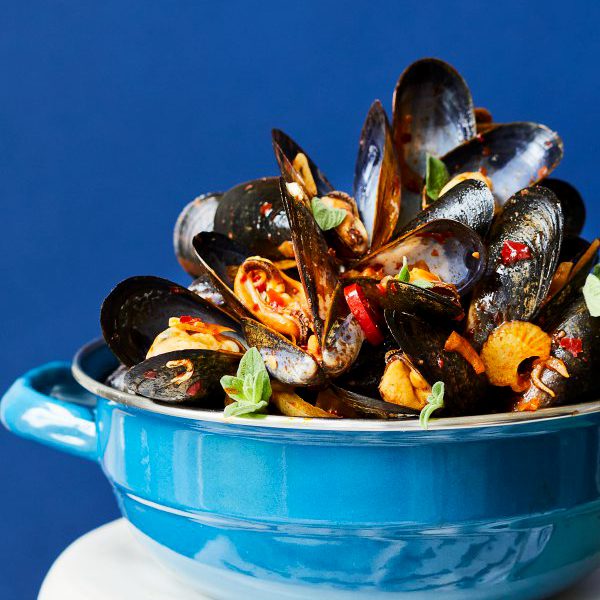
Grilled miso mussels with ginger and lime
Perfect for a starter or served with chips for a main, these crispy and zingy mussels are something we’d happily snaffle all in one go at the kitchen table.
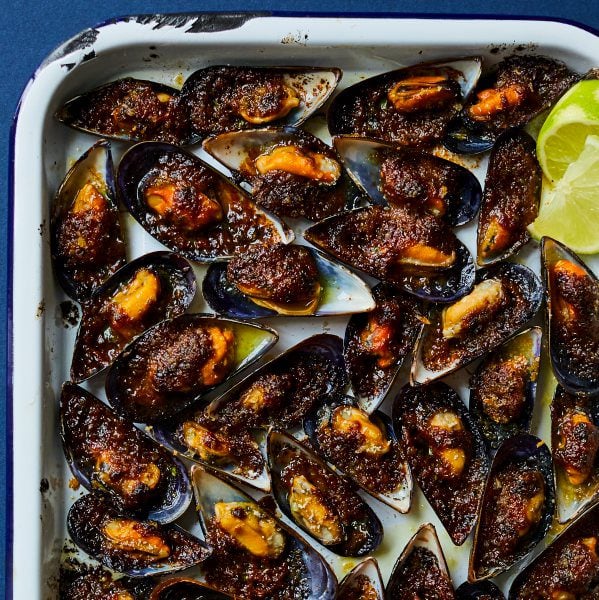
Mussel and potato salad with capers and thyme
This beautiful mussel summer salad is ideal with a glass of white wine. The waxy boiled potatoes are the perfect vehicle for a piquant dressing of olive oil, white wine vinegar, shallot, capers and thyme.
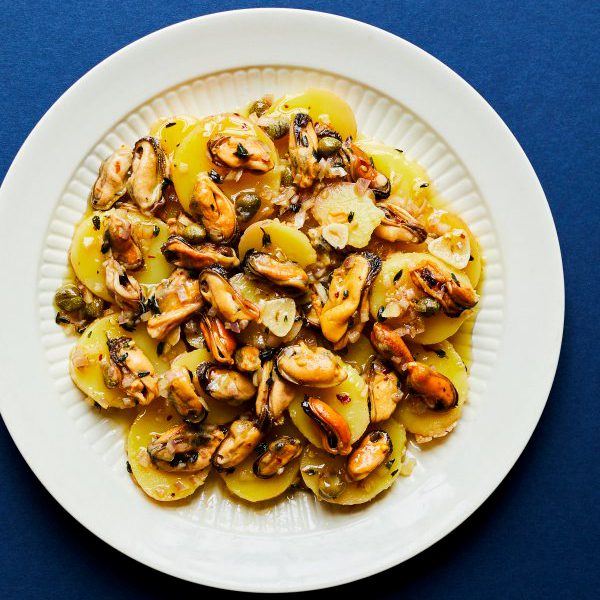
Subscribe to our magazine
Food stories, skills and tested recipes, straight to your door... Enjoy 5 issues for just £5 with our special introductory offer.
Subscribe
Unleash your inner chef
Looking for inspiration? Receive the latest recipes with our newsletter
